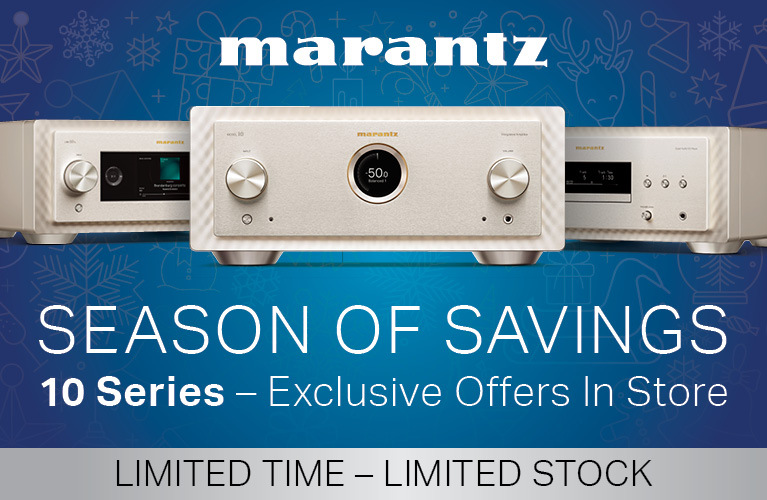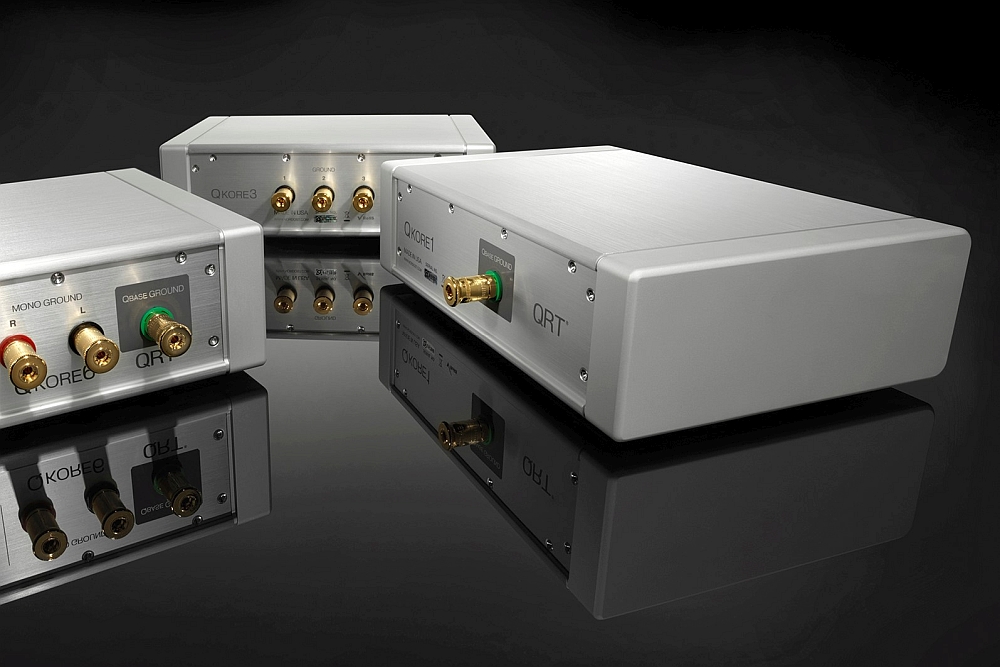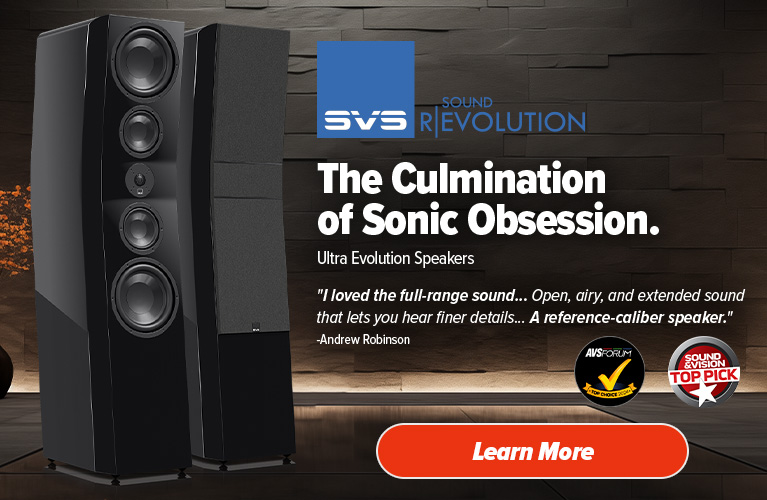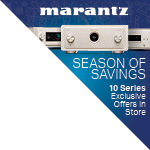When you power on your home audio system and turn it up, you don’t just bring the noise, chances are, you’ve got too much of it already in the form of AC-born (-/e) electrical noise. The AC power line is the lifeblood of a home audio system and its quality is critical to a system’s ultimate performance no matter how well designed the power supplies of your individual components. But what you are hearing (and therefore not hearing, as it were) is a function of the quality of your AC. Indeed, the perception that a hi-fi system often sounds appreciably better in the wee small hours after regular folk have stopped using as much electricity and gone to bed, is a recognised audiophile phenomenon, to this listener at least.
The noise factor contribution of a ground conductor in the AC line similarly has a profound impact on audio playback quality. The ground conductor functions both to ground and shield the component (so that you don’t get electrocuted listening to AC/DC’s Powerage, for instance), to also provide a path of least resistance for dirty electrical noise generated by the system’s power transformers and by voltage generated grunge caused by electrical imbalances in different system component’s signal and ground paths. The importance of a solid, clean ground in all of this cannot therefore be overestimated, particularly in real world applications where you can’t rely solely on Mother Nature to adequately give you one.
Fight the power
Problems with AC quality start, of course, with the power grid itself and how far, and where, and through what your AC line has travelled to reach your wall outlet. But that is merely the first of a myriad of problems making the power domain a public enemy No. 1 for gaining optimal performance from your system. Noise from household appliances like your fridge and air conditioner, and your neighbour’s fridge and air conditioner if you live in an apartment block which shares the same local power circuit, have long been known to generate detrimental AC line noise.
Now, additionally, we have digital technologies such as computers and smart phones spawning new forms of electrical noise oppression. Switching power supplies, Wi-Fi, Bluetooth and other cellular transmitted signals cause what Nordost calls “airborne pollution to the AC line” resulting in “high frequency interference, noise, and stray voltage generated magnetic fields” that lead to even more AC line contamination and waveform distortion.
“Noise annoys” sang the Buzzcocks, and that cannot be readily or necessarily remedied solely by recourse to separate mains spurs, dedicated AC lines, or indeed, certain expensive after market power cords. It is to this noise specifically that the Nordost QKore1 Ground Unit, either alone or in conjunction with other Nordost QRT power products, is designed to target and alleviate by providing an artificial, clean earth for home audio systems.
Going Underground
Now, I like living in a shared space in an apartment in an overcrowded city and I am not prepared to let my membership of this controvertible hobby marginalise me socially or spatially any more than necessary. I cling to the antiquated notion that enjoying music via a home audio system should itself be a shared experience in a shared space like our living room. Here a dedicated line for an “audio room” is simply not feasible and nor is an external ground rod attached to that line, buried and watered somewhere outside in the street, as is done by some, to achieve more effective grounding of a system for cleaner power to the system.
Nonetheless, I believe in doing what I can to preserve the integrity of my AC-oppressed audio signal and still respect the extremist dedication of Japanese audio extremists such as Takeo Morita who, as reported in the WSJ, installed his own personal utility pole and power transformer in pursuit of the purest power. I agree, in particular, with his observation that: “Electricity is like blood. If it is tainted, the whole body will get sick. No matter how expensive the audio equipment is, it will be no good if the blood is bad”.
Star Power
For the past few years, I have been using and purchased at retail a number of Nordost QRT power products for my system: the QBase QB8 Mk II Power Distributor, two QX4 Power Purifiers run in series directly from the wall outlet, and two QV2 AC Line Harmonizers (one in the spare wall socket and the other in a spare socket of the QB8ii) with surprising satisfaction no matter what the system components or brand of cable.
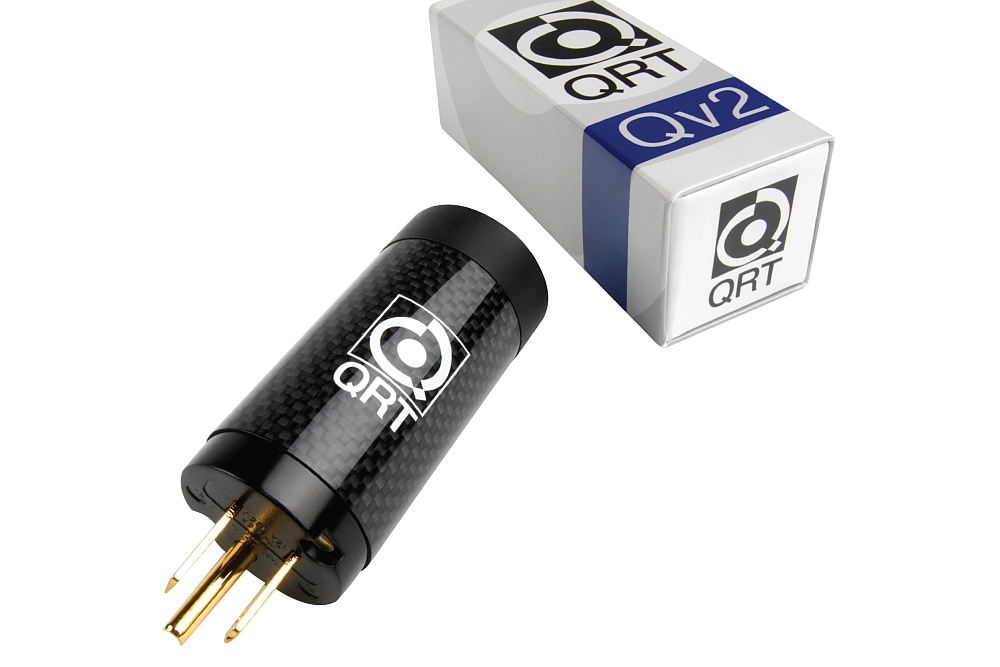
I say surprising because in the past such power conditioning products, especially those that use filters, have ultimately had a deleterious effect in my experience, choking flow, thinning tonality and limiting dynamic capability. The “power” of QRT is cumulative in effect and the improvements wrought are not subtle. Taken together they have become an essential part of my home audio system and to call them accessories or tweaks is doing these products a distinct injustice.
I was initially attracted to the QRT products because they eschew tone-sucking filters, and more importantly, because of their emphasis on star grounding schemes which, having grown up with Naim electronics and then Shun Mook approaches to grounding schemes, I have come to appreciate is crucial to making music the way I want to hear it. Back then, the cheapest and simplest way to achieve greater musical coherence by way of quasi-star grounding was to plug all your components into a common power strip or distribution point given that the last true star grounding point for a home’s electrical service is at the service entrance only.
Not unsurprisingly, the foundational product in the QRT line is the QBase AC Power Distributor, “an uninterrupted, straight line AC distribution path” which according to Nordost, is “the first necessary step in creating solid grounding” and is the logical partner to the QKore1 Ground Unit. Because not all system components have the same impedance, a typical system is beset with conflicting flows of signal and ground paths or multiple ground points which enhance noise. The QB8 Mk II uses a star earth topology in which the impedance of every outlet, with the exception of the primary earth outlet (designated, as it should be, for the preamplifier), is lifted by 0.5 ohm so all the lifted impedances flow to the common ground point or centre of the star.
Connecting QB8 Mk II to QKore1 exploits proven star grounding techniques to draw stray magnetic fields and stray dog electrical noise out of your system to an artificial common ground point before your AC hits your components and represents the cheapest and simplest way to experience a Nordost QKore independent grounding solution.
As lamented above, not all of us have the means to run designated AC lines attached to an external ground rod to achieve better grounding and purer power. Not all of us have the desire to risk floating the AC grounds of all components except the preamplifier and ground only the preamplifier to that external copper rod either! Most of us are stuck with the bad blood we get from our existing imperfect AC line. The Nordost QKore1 works instead to ground the system to an artificially manufactured earth point inside your listening room which mimics the use of an external grounding wire or rod. It is not designed to replace an existing external ground but rather to improve upon it.
Nordost says the QKore1 Ground Unit, functions as “a parallel grounding device, which provides an artificial, “clean” earth for Hi-Fi audio systems using both an electrical and mechanical approach”. Whereas other grounding devices such as the Telos GNR take an active approach, the QKore1 “combines Nordost’s patented Mono-Filament technology with purpose-built, Low Voltage Attractor Plates (LVAPs), constructed with a proprietary metal alloy and a passive electronic circuit, in order to draw stray high frequency noise and voltage-generated magnetic fields to a manufactured earth point, leaving a clean reference behind”. A notable distinguishing feature of the QKore1 is that unlike many ground boxes which attempt to mimic grounding in the earth, the QKore1 does not use organic materials rendering the QKore1 immune to temperature fluctuations and humidity.
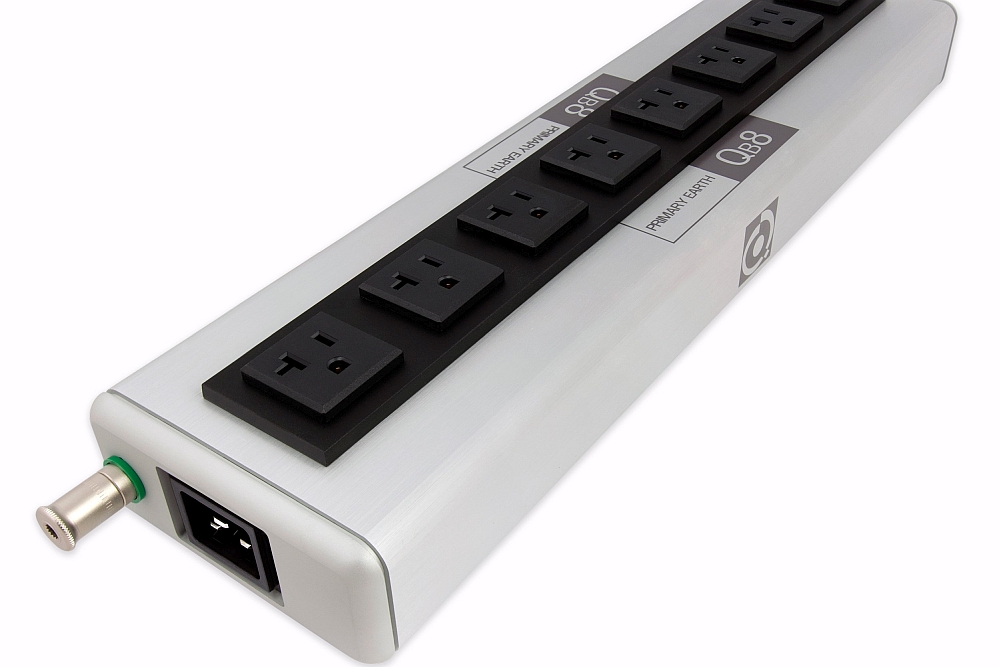
The QKore1 is designed to provide a “parallel” ground for a Nordost QBase Power Distribution block (or a like power strip fitted with a suitable grounding post) and is designed to ground only the primary or AC side of the audio system power supply. The more expensive QKore3 is furnished with three multi-use binding posts to ground three audio components themselves and addresses the secondary or audio circuit side. One or more of these discrete units can be added later for a cumulative step up in performance. “Higher ground”, so to speak, when funds permit.
The most expensive QKore6 integrated, all-in- one unit has two sets of plates and binding posts to ground three audio components, as well as two left and right channel mono amplifiers separately and one dedicated “QBASE Ground” for the power block. As such, it operates on both the primary and secondary sides of the power supply and so, I would have thought, most comprehensively and effectively achieves a proper common system ground reference point, performing both AC and component signal and chassis grounding at the same time.
The Nordost literature is a bit light on when it comes to supporting theory. But even though the QKore1 is recommended to be used in conjunction with a QKore3, the QKore1 still operates, like all QKore, by providing a parallel ground, in this case, to all the equipment plugged into the QB8 Mk II.
Says Bjorn Bengtsson of Nordost, “the reason for loving the QKore1, would be that this is the way to take care of any stray voltages in the AC domain or the AC ground before it hits and pollutes your equipment”. In listening, the beneficial effects of using just the QKore1 alone should not be underestimated. Especially, if like me, you like to jam Hi-Fi accessory econo.
Matching the Qx4 Power Purifier, the QKore1 Ground Unit is housed in a half rack width sized casing that is precision machined out of a solid block of aviation grade aluminium and has a sleek, retro futuristic appearance. The hollowed out housing is also apparently “mechanically tuned” (but performs even better when further mechanically grounded by way of footers like the excellent Nordost Sort Kones for which, surprise, surprise, specific provision is made in recesses on the underside of the casing…) and is outfitted with gold plated, WBT binding posts. See our Sort Kone BC review here.
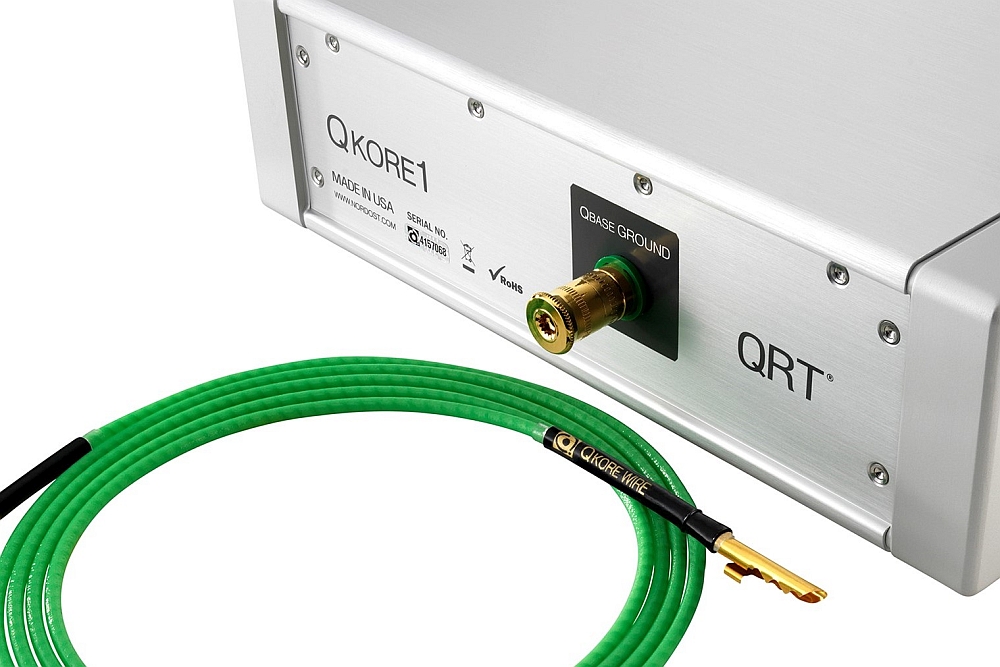
Finally, as befitting one of the high-end’s most pre-eminent cable manufacturers, in order to complete the job, the QKore1 is supplied with a purpose designed two metre Nordost QKore Wire terminated, in this application, at both ends, with Nordost’s preferred banana plugs. The QKore Wire is constructed to provide that ‘path of least resistance’ grounding connection in QKore land, here, between the QB8 Mk II Power block and the QKore1. The cable is a mechanically-tuned 16 AWG, silver-plated OFC, solid core conductor with extruded FEP insulation that utilises the same patented “Micro Mono-Filament technology” as found in the QKore1 itself.
Power Blessings
So what does this cultivation of my AC power, and AC ground by enhanced indoor means, do exactly to enhance our appreciation of music?
I began by returning our system to its pre-QRT’d state for a period and then installed just the QKore1 and QB8 Mk II expecting a “did you hear anything, are you sure?” response from listeners. The difference is instant and clearly audible. Its effect is also resoundingly musical even when listening to artfully noisy and clamorous recordings like Tom Waits “Dirt in the Ground”. What on earth have we been smoking?
The QKore1 consistently brings heightened clarity and dimensionality. The system sounds markedly less veiled and is manifestly purer. It sounds clearly bigger, more detailed and clearly (that word again) more open and natural. It makes it patently obvious that there is ample noise already in Waits’ nicotine stained vocal cords.
There is a profound sense of electronic quietude and calm with the QKore1 independently grounding the system which is felt as well as heard as a striking lack of constriction or ‘non-strangulated’ ease. There is an appreciable lowering of the noise floor. There is greater separation and less interstitial electronic haze in those crucial spaces between the notes and beats where the music (and the system) breathes. Our musical senses are now working overtime, not by magic or voodoo, but because the audio components have had their sonic chakras aligned and are simply not working as hard.
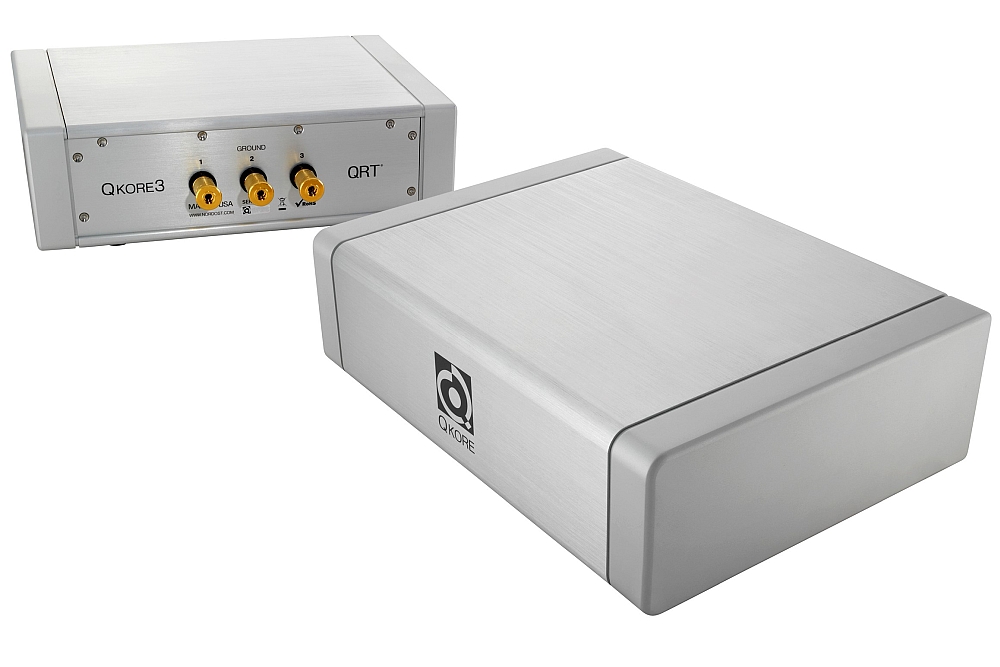
Musical strands in more complex passages are better delineated and offer deeper musical insight albeit occasionally with a hint of forwardness in the presentation as if you have been moved a couple of rows closer to the performance. Restoring the other QRT confirms not only their cumulative effect but also ameliorates that sense of slight forwardness. The QKore1 does not operate by unduly emphasising the upper mids (thereby giving a false sense of heightened clarity) nor by beautifying or colouring the sound in some other way. Check out Jackie McLean’s characteristic nasally skronk and squall on Let Freedom Ring. McLean’s distinctive timbre remains intact no matter what the configuration of QRT.
Unlike a major cable transplant, there is no discernible change to the system’s innate tonal character. Transparency is not affected and there is no loss of body or continuousness. There is a discernible improvement in transient response but never to the detriment of King Tone. In fact, tone (and timbre) is preserved and, if anything, is nurtured by the QKore1. It is denser and richer but is also more harmonically accurate and corporeal. Centre fill is, well, fuller, and more focused, leading to greater tangibility and emotional involvement. There is a marked improvement in musical flow, timing and dynamics indicating source impedance is kept low and there is no choking or ‘coagulation’ of peak AC current.
Now I’m sure this increased purity would allow one to peer farther into the ‘none more black’ corners of the acoustic space. I’m pretty certain there is more top end air and extension leading to more clearly defined image outlines and specificity, broader soundstages, and other such Hi-Fi artefacts. But arguably, the most obvious improvement/revelation and, to this listener, of the greater musical significance, is what the QKore1 does to the bass. Bass reproduction is just superb when using the QKore1. Not in quantity so much as bass quality. Bass is tighter with remarkably enhanced bass transient response, pitch articulation, and capacious illumination of musically relevant inner detail.
Conclusion: People have the Power
I have no doubt drained the power grid penning this review. To say that I am impressed by my experience with the Nordost QKore1 Ground Unit should be obvious. I never realised the impact “a bad case of noise maker blues” (with thanks to The Hold Steady) could have on my music. Long term use of other QRT products notwithstanding, I never appreciated how effectively imperfections caused by electrical noise “bad blood” could be addressed by means of an independent ground box on the AC power side alone. What the QKore1 then does by giving a musical blood transfusion to each and every audio component, and to so clearly and audibly ‘AC lift’ the performance of my entire system, is genuinely astounding.
The QKore1 is designed and manufactured by a reputable company. It offers a high quality solution for reasonable cost and it may well function more predictably and more reliably than many far more expensive aftermarket AC power cords. It is also part of the flexible, modular QRT system which makes for sequential improvement and less risk of “instant karma” product obsolescence.
The QKore 1 is highly recommended and for this listener is an essential purchase. As essential as Captain Beefheart when he sang about, “Singin’ through you to me, thunderbolts caught easily, shouts the truth peacefully, E-LEC-TRI-CITY.”
…Peter Katsoolis
Associated Equipment
- Loudspeakers – Wilson Audio Sabrina, Shun Mook Bella Voce, modded Electro-Voice Interface D Series II
- Amplifiers – VTL MB 185 Signature Series iii; Pass Labs XA-25 and First Watt F7; Wavelength Audio Napoleon 300B monos; SPEC Corp. RSA-M3EX and RSA-777EX (on loan)
- Preamplifier – VTL 6.5 Signature Series II; CAT SL-1 Signature
- Source – Aqua Acoustics La Diva CD and Formula xHD DAC; Metrum Acoustics Hex DAC; Auralic Aries Streamer
- Cables – Acoustic Revive XLR-1.OPA II; Nanotec Systems MS#207 XLR; Nordost Heimdall 2; Skogrand Wagner AC; JPS Kaptovator Lite; Vermouth Audio Black Pearl and Red Velvet; Manufacturer’s own power cords
- Equipment Rack – Mana Acoustics
- Accessories – Nordost QRT QX4 Power Purifiers, QB8 II AC Power Distributor, QV2 AC Line Harmonizers, and Sort Kones BC; sundry Shun Mook Mpingo discs and old style ebony and maple boards; Acoustic Revive RIQ-5010, 5010W, and HQ-4 Insulators and RHB-20 Hickory Board; Black Diamond Racing The Shelf; SPEC Corp. RSP-901EX and RSP-AZ1 Real Sound Processors; Ikea Aptitlig butcher’s blocks
Nordost QKore1 Grounding Unit
Price: AU$4295
Warranty: TBA
Australian Distributor: Advance Audio Australia
+61 2 9561 0799
www.advanceaudio.com.au
Nordost
93 Bartzak Dr.
Holliston, MA 01746
United States of America
+1 508 893 0100
www.nordost.com

